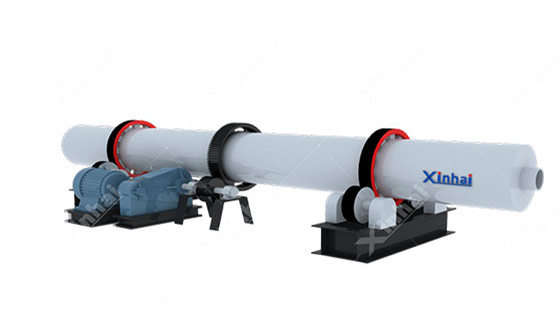
With the increasing demand for nickel ore and the deepening development of nickel sulfide ore, laterite nickel ore has gradually become a new trend in nickel ore development. The laterite nickel ore has a complex geological structure. The nickel content and mineral composition of different deposits vary widely. Therefore, it is difficult to enrich by traditional beneficiation processes. At present, the beneficiation processes of laterite nickel ore include nickel-sulfur process, rotary kiln-submerged arc furnace process (RKEF), sintering-blast furnace reduction process, direct reduction process, acid leaching process, etc.
The nickel-sulfur process, rotary kiln-submerged arc furnace process (RKEF), sintering-blast furnace reduction process, direct reduction process and other pyro-smelting methods to enrich laterite nickel ore is greatly limited by power supply. It has problems such as high investment and pollution. The chemical beneficiation processes like acid leaching can be used for laterite nickel ore beneficiation. After researching on different types of laterite nickel ore, Xinhai finds that using normal pressure acid leaching, pressure acid leaching, normal pressure + high pressure combined acid leaching to treat laterite nickel ore can achieve good beneficiation effect.
Atmospheric pressure acid leaching is suitable for treating laterite nickel ore with high magnesium content. Sulfuric acid and hydrochloric acid are generally used as leaching agents. During processing, the ground laterite nickel ore is first made into pulp with a certain concentration. Then a certain concentration of acid is added to the pulp, and the temperature is controlled to leaching elements such as nickel, cobalt, iron, magnesium, and aluminum in the ore, and the pulp is separated and washed for post-processing. Then add alkali into ore pulp to neutralize the pulp and remove impurities such as magnesium, iron, and aluminum. After liquid-solid separation and washing, the obtained liquid is reprecipitated to obtain nickel cobalt hydroxide. The remaining liquid is re-neutralized to remove calcium, and magnesium is returned to production and a part of discharge. The iron in the leaching solution of laterite nickel ore is converted into iron phosphate, which is further processed into lithium iron phosphate.

The pressure acid leaching process is suitable for processing laterite nickel ore with high limonite content and low magnesium content. The specific technological process is to first grind the laterite nickel ore with a ball mill, and then modulate it into a stable concentration of pulp. After preheating, the pulp will undergo a leaching process at a stable sulfuric acid concentration. During leaching process, elements such as nickel, cobalt, iron, and aluminum are leached together. After the processes of separation and washing, impurities such as iron and aluminum enter the slag, while nickel and cobalt remain in the solution. According to the requirements of the product scheme, different processes can be used to produce high-quality nickel-cobalt hydroxide, nickel-cobalt sulfide or nickel-cobalt sulfate crystals.
Combined acid leaching process includes two stages: atmospheric pressure acid leaching and high pressure acid leaching. This process can be used to treat laterite nicke ores with different contents of magnesium in the ores. The acid leaching process produces excess acid after treatment. Therefore, in the purification process of the late leachate, it is necessary to neutralize the excess acid. This will affect the subsequent impurity removal operations to varying degrees. Therefore, Xinhai has studied the two-stage leaching process based on the two processes of atmospheric pressure acid leaching and high pressure acid leaching, namely the combined process of atmospheric pressure leaching and high pressure acid leaching Process for processing laterite nickel ore. Its main purpose is to neutralize the excess acid in the leachate, thereby removing part of the ferric iron. In the acid leaching solution of high-magnesium type laterite nickel ore at atmospheric pressure, adding low-magnesium type minerals to carry out two-stage high-pressure acid leaching can neutralize free acid.
In actual production, different laterite nickel ores have differences in properties and mineral compositions, which cannot be copied without consideration. Xinhai suggests that mine owners do a good job of beneficiation tests to clarify the nature of the deposit. Only by formulating a beneficiation plan in a targeted manner can the ideal economic benefits be obtained.
To find out more about our products and solutions, please fill out the form below and one of our experts will get back to you shortly.